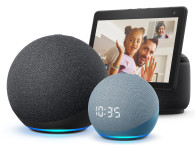
“Growth presently continues unabated, as virtual assistants become a common feature across the Consumer Electronics and Automotive sectors,” says Simon Forrest, Principal Technology Analyst at Futuresource Consulting. “Indeed, 2020 will be the year when shipments of voice-enabled products overtake those with no voice capability.”
Across the leading assistant platforms, Apple’s Siri presently holds 35% share globally, reflecting the continued success of iPhone and the newly released AirPods Pro. Google Assistant and Amazon Alexa hold 9% and 4% market share respectively, due in part to shipments across their 1st party products. Microsoft retired Cortana from Xbox, however its domination in Windows 10 PCs ensures that Cortana holds 22% market share worldwide.
Microsoft is switching its strategy to make Cortana more enterprise targeted, with tighter integration into Office 365 and its suite of productivity tools. In China, Baidu’s DuerOS posted strongest growth, rising 6% year-on-year to command 15% market share in 2019.
Several products now embed support for multiple assistants, usually selected via a configuration option permitting the consumer to choose which voice ecosystem they wish to use. Only a handful of products on the market offer simultaneous access to multiple assistants. “Virtual assistant vendors have, unsurprisingly, been reluctant to cooperate,” says Forrest. “But this is destined to change following the establishment of the Voice Interoperability Initiative, a program created to ensure voice-enabled products offer customers choice and flexibility through multiple, interoperable voice services.”
Regionally, Asia Pacific showed a strong performance over the year, commanding 43% share of the “built-in” assistant market, as Alibaba, Baidu and others including Xiaomi increase penetration of their Chinese language assistants. In EMEA and the Americas, Amazon, Apple, Google and Microsoft continue to dominate; Siri maintained its leading position, with Google Assistant also posting strong growth in EMEA, as support is extended across the region.
Improvements in machine learning are allowing speech models to be significantly reduced in size. “Alongside the introduction of neural network accelerators in silicon chips powering consumer electronics products, this allows virtual assistants to begin to operate independently on the device itself, without always accessing the cloud,” explains Forrest. “This leads to enhanced privacy and also enables advanced conversational ability, due to reduced latency overall.” In November, Amazon lowered product hardware requirements, enabling microcontroller-class devices to participate in their voice ecosystem, by creating a new virtual Alexa built-in solution in the cloud.
Technology innovation continues in speech synthesis. “The move towards neural Text-To-Speech technology creates more natural-sounding voices that imitate patterns of stress, rhythm and intonation,” explains Forrest. “Amazon went a stage further and introduced emotions into Alexa, conveying empathy. These advancements in voice technology may appear superficial at first, however a less robotic voice leads to consumers expecting more capability from their virtual assistant, leading to increased engagement.”

www.futuresource-consulting.com






